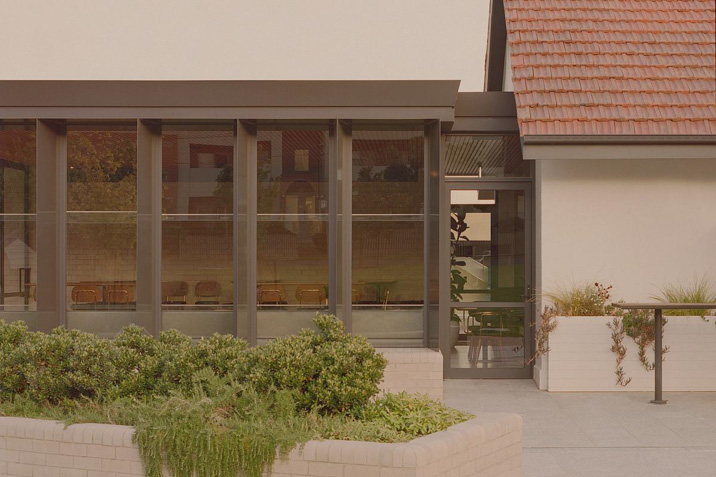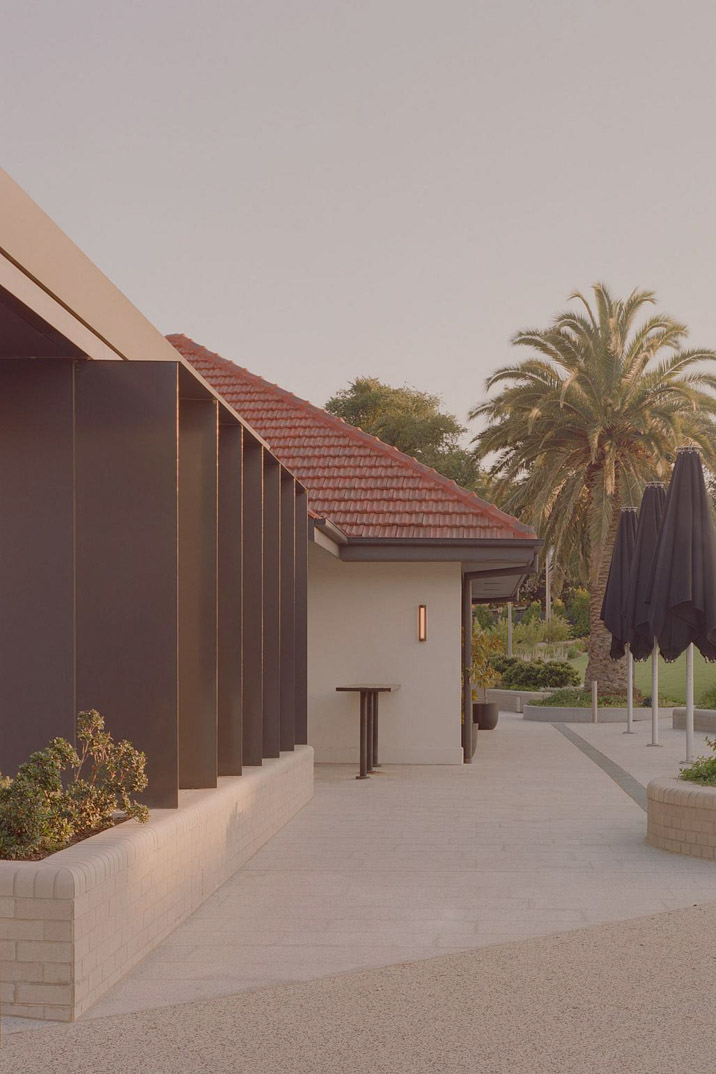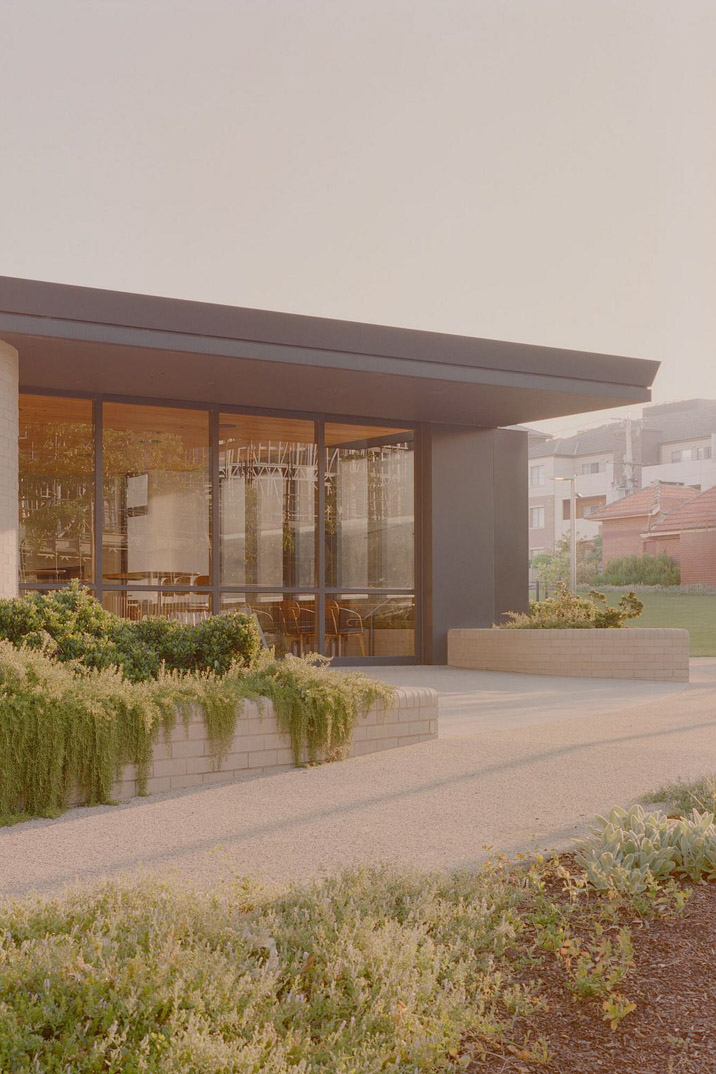From the architect:

We were approached by the clients via a design competition, which we eventually won, to transform the original 1930s Moonee Valley Racecourse Tote Building into a new restaurant, bar and social space that would be the centrepoint to a new parkland and entry point to the entire precinct.
For almost a century, this building had been the original place to make bets when at the racecourse, and had been subject to a number of adhoc renovations and additions over the years. Unique to the building was the series of long, thin, vertical betting windows which had been covered up completely on the west side of the building.

Underutilised for the previous decade or so, and up to recently, mainly a place of storage and offices, the client saw an opportunity to bring this significant historical building back to life. As part of the broader vision for site which was to transform the entire precinct west of the Tote Building to Feehan Avenue into a public park, the brief was for this building to become a place to meet, dine, socialise and provide an active frontage to an urban area which for years had been greeted only with large brick walls.
We saw an opportunity immediately to strip back the existing Tote Building to its original 1930s form, which meant removing a series of offices and blockwork amenities that had been plugged into the building for a number of years.
Given the scope of the project brief, there was a requirement to extend from the existing form, and we felt strongly that this should be a contemporary extension that was sympathetic to the original form, yet completely of its own era. We did not want to extend with a form that would dominate nor detract from the original architecture, nor confuse. Therefore, we pursued a vernacular that had its own language and rhythm, however with subtle nods to the Tote.

Articulated by refined, steel profiled edges, this lightness, particularly in the roof structure, provides a nice contrast to the broad, terracotta, historic roofline, and sits nicely below. This occurs at both the northern pavilion which extends as a dining area to the north, and the south addition which helps create the kitchen and private dining room.
The slim vertical windows hooded by steel revealing to the west facade of the north pavilion is modern play on the heritage vertical tote windows, with the rhythmic facade also providing banquet seating, both internally and externally.

A composition of curved brickwork is used in both extensions which mirrors the tones throughout the entire historic site, and again provides a unique counterpoint to the existing form.
Internally, a grand, oval shaped bar provides a central greeting point, and an anchor to the entire project. It is a subtle reference to the race track itself, but more significantly, the heritage of the building and the local area. The use of the majestic bronze overhead carriage-way was a feature that involved opening up the vaulted ceiling above that for many years had been completely closed up. A rich, classical and restorative touch, the carriage-way and bar sit within the larger proportion of the existing Tote structure and is a successful and complimentary design response.

Throughout, a material palette of rich timbers, bronze and leather are classical and timeless in their approach, and a nod to the rich, historic early years of the Tote Building and the post-boom era for which the Moonee Valley track emerged.

